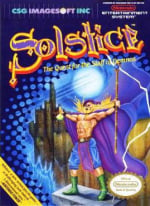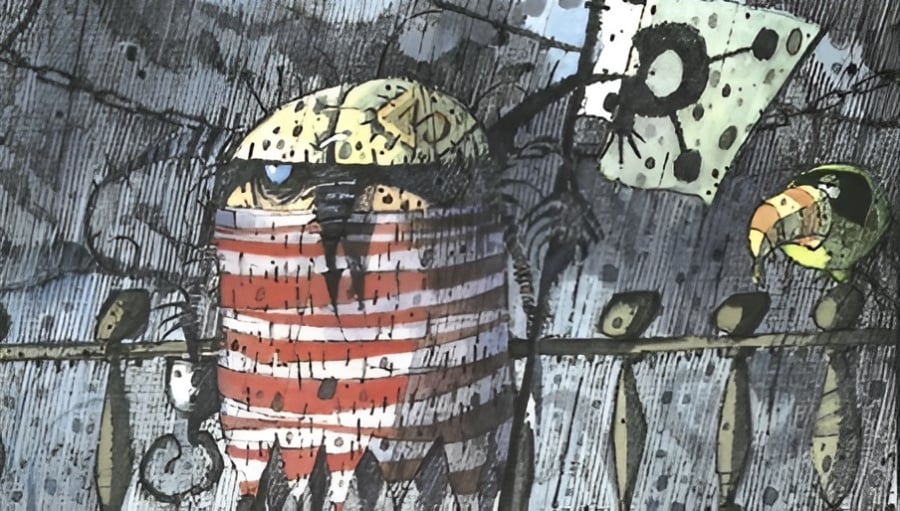
As part of our end-of-year celebrations, we're digging into the archives to pick out some of the best Time Extension content from the past year. You can check out our other republished content here. Enjoy!
The original PlayStation had a lot of games announced for it that were sadly canceled before anyone got the chance to play them, but one that has always stuck in our minds was Software Creations and Sony Computer Entertainment Europe's (SCEE) Spiral Saga — a spiritual successor to the NES classic Solstice and its SNES follow-up Equinox.
Throughout the mid-to-late 90s, Spiral Saga made a bunch of appearances in gaming magazines, pitched as one of the exciting new exclusives coming to the PlayStation console, but it never ended up being released with Sony instead quietly pulling the plug on the project in 1998.
In recent years, information and images from Spiral Saga have been pretty hard to come by, with the occasional press cutting and developer photo seemingly all that survived from the project. So recently we decided to dig a little deeper into this mysterious lost Sony exclusive, interviewing multiple people who were involved with it to learn more about what happened and hopefully recover some never-before-seen assets. Before we discuss the cancelled project, however, it's probably best for us to quickly go over the history of the Solstice and Equinox, as it's important to understanding why this project was greenlit in the first place.
Solstice, Equinox, And The Arrival Of PlayStation
Back in 1990, Software Creations released Solstice for the NES in partnership with the publishers CSG Imagesoft (later Sony Imagesoft) and Nintendo.
The isometric puzzle game, designed by Mark Wilson and Mike Webb, was Software Creation's first original title and followed a simple story about a stolen princess named Eleanor and an evil baron called Morbius. Playing as the wizard Shadax, you had to explore the baron's fortress, picking up keys and moving blocks to solve puzzles, with the ultimate goal being to collect the Staff of Demnos, which had been broken into multiple pieces, and free the princess.
Despite the somewhat generic story, outlets like Total!, Mean Machines, and CVG, awarded Solstice strong reviews following its launch, encouraging Software Creations to make plans for a sequel, which would be called Equinox. This was to be one of the first games in development from a Western developer for the 16-bit Super Nintendo, but wouldn't be released until 1994 reportedly due to a series of graphical glitches delaying the project.
Equinox featured a design from the Plok! developers Ste and John Pickford (often referred to collectively as the Pickford Brothers). It focused on a new character named Glendaal, who was the son of Shadax from the original, on a mission to save his father from a wayward apprentice named Sonia. Players would once again be able to explore isometric environments but with new features including the introduction of weapon-based combat and an overworld map filled with monsters.
Much like its predecessor, the sequel was incredibly popular with critics after it was released in 1994 - even earning a perfect score from the magazine GamePro — but there was some dissatisfaction within Software Creations as Sony Imagesoft had forced the team to cut a whole RPG story element with NPCs, quests, and towns out of the game to get it out quicker. The team hoped that they might be able to revisit some of these ideas in a follow-up at a later date, and pretty soon, a perfect opportunity presented itself with the emergence of the PlayStation.
During the development of Equinox, Sony and Nintendo had briefly announced that they were working together on a CD-ROM add-on for the Super Nintendo Entertainment System, which was eventually abandoned after Nintendo backed out of the deal. This led Sony to announce its own plans to move into the console market with the creation of the PlayStation. And so, in need of exclusive titles for its new machine, Sony Computer Entertainment Europe (SCEE) approached Software Creations in early 1995 with the idea of publishing a spiritual successor to Equinox for the original PlayStation.

Martin Alltimes, a former producer at SCEE, tells us, "Sony [Imagesoft] had released both Solstice and Equinox on Super Nintendo, and so they were like, ‘Hey, why don’t you talk to these guys?' So we went up to Software Creations and I met John and Ste [Pickford]. And basically, at the end of the interview, I said look, ‘Why don’t we just build something original based around the mechanics of Solstice and Equinox?’"
Over email, Ste Pickford corroborated this story, telling us, "Yeah, exactly. It wasn't an Equinox sequel in terms of story or a franchise, but more like a spiritual sequel - let's do the next isometric adventure game / RPG."
A New Direction & Early Challenges
Software Creation's hope for this title was to finally realize some of the ideas that had been removed from Equinox, with Ste Pickford writing up a new design for the project that reincorporated many of the RPG elements. According to Chun Wah Kong, a level designer at Software Creations who worked on Spiral Saga, the design document for the game was "the size of a phonebook" and "easily the most detailed [he had] ever come across up to that point". For its story, meanwhile, Sony hired Joe Dever, the author of the Lone Wolf books, to work on a potential script.
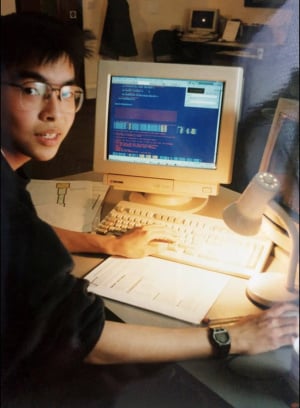
Details on the story are fuzzy, but from what we know, it would have followed a young boy on a quest, with the idea being that as you traveled through the overworld completing dungeons, you would gradually grow older and the seasons would change. This overworld would have been divided into 10 different maps, with each having unique tilesets as well as a range of weather effects such as rain, snow, and fog. Screenshots of only two of these sections have ever surfaced, showcasing a rocky area and some grassy ruins. But those we spoke to told us the team also created villages and towns where you could purchase items and talk to NPCs, as was originally planned for Equinox.
As Chun Wah Kong tells us, the game had "a darker and [more] menacing feel" overall, and the art style helped to get this point across. Characters were no longer small and cute like Equinox, but instead more similar in proportion to real humans, making the threats feel more realistic.
The task of defining the art style was split between two employees, who had both previously worked at Cosgrove Hall Films, an animation company responsible for the BFG, Danger Mouse, and The Wind in the Willows. One artist Weston Samuels was tasked with designing the game's heroes, while another named Stephen Hanson created the look of the enemies in the game. A group of graphic artists at Software Creations, including Justin Eagleton, Lyndon Brooke, and Dave Mac were then tasked with translating these designs into 3D models.
Rather than try for a full 3D-art style, which had yet to become the norm within the industry, Software Creations took advantage of pre-rendered sprites and assets similar to the technique used in Donkey Kong Country, to evolve the isometric perspective from Equinox and Solstice, giving the environments a greater sense of depth.
As Kong tells us, "Perhaps the decision was to play to our strengths. As a result, the game had a very strong visual identity and the backgrounds looked very organic, unlike the grid-shaped layout associated with this genre."
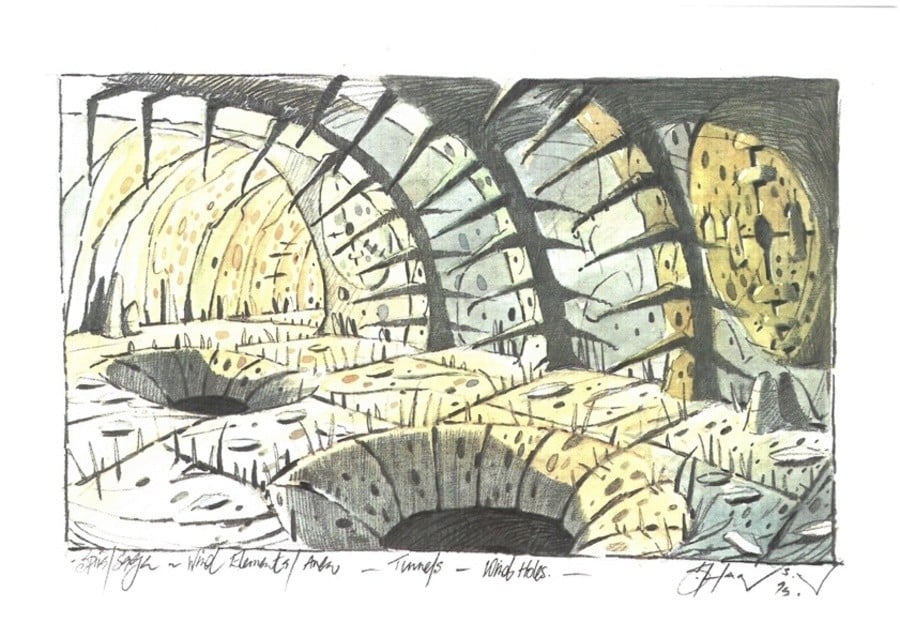
As others who worked on the project tell us, however, this change in style wasn't without its challenges. Hanson's scratchy art style was popular with the team but as many note, it didn't necessarily translate well to pixels, with the 3D artists struggling to faithfully recreate his drawings. To further complicate matters, the team was also now having to adapt to working more with Silicon Graphics workstations, in 3D, and on totally new hardware. This represented a difficult shift for the company.
David Bone Gill, one of the programmers, says, "We were a SNES company so we were making games like Plok, Equinox, and Tinstar, and we had a lot of traditional animators, so we didn’t really know what to do with the hardware, things like the SGIs and stuff. Nor did we really have the toolsets to make the 3D animated characters. So we were rendering out lots and lots of frames of characters. It probably would have looked like a high-end SNES game rather than a PlayStation game. But I think it would have looked really unique after it had come out. It would have aged really well."
Announcement & Magazine Coverage
According to Martin Alltimes, who was the producer on the project at Sony, the initial plan was to turn the game around in 18 months, but its development dragged on for much longer than that for a few reasons. The studios' unfamiliarity with making 3D games was one of these factors, but another significant contribution was BCE Holdings' mismanagement of the studio.
BCE Holdings, a snooker/amusement arcade business, had acquired Software in 1994 and had invested a large amount of money into greenlighting a collection of 32-bit projects at the time, many of which were far too ambitious for the small teams that were working on them. As a result, a lot of the original projects the company was trying to get off the ground struggled to come together on time; Spiral Saga included.
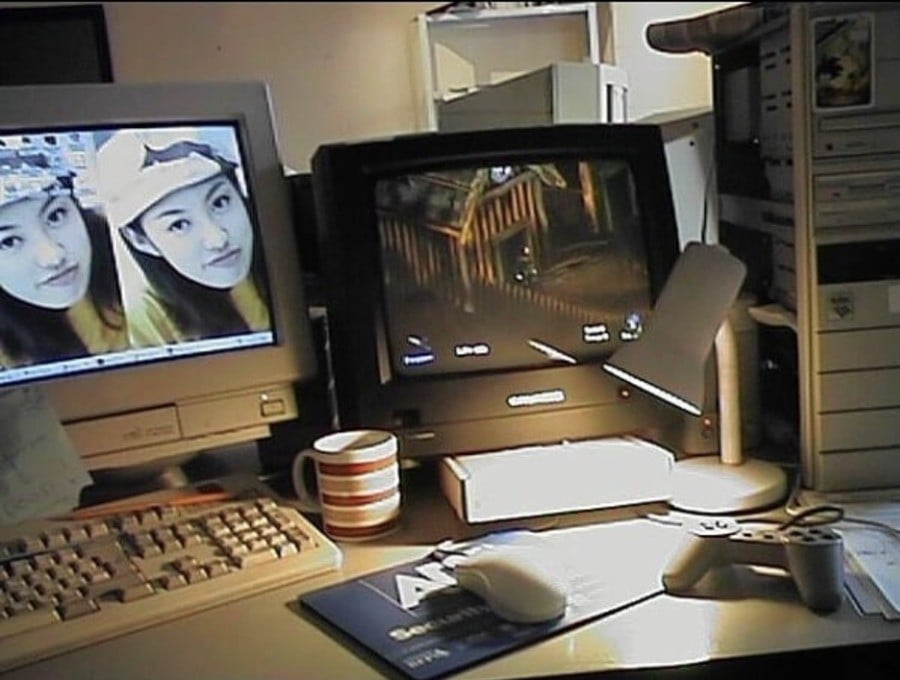
Nevertheless, development on the game continued with the hope that with enough time, the company might eventually have a finished product, and Sony's marketing machine spun into action, teasing the game to members of the press. It was in July 1996 that Sony first announced Spiral Saga to the world and started promoting it in magazines like PlayStation Plus and Hyper, with the latter advertising that the game would be out before Christmas. To add to the hype, the game was also included as one of 15 titles included on the back of the PlayStation's packaging in Europe, alongside other upcoming titles like Tekken 2, Crash Bandicoot, and Tomb Raider.
Some of the people we spoke to who worked at Software had no idea about this, but suspect that the announcement was Sony's way of making sure the team didn't drag their heels. They also added that this date would have been extremely unrealistic given what they had already finished.
The announcement and marketing push is something that Alltimes now takes credit for, claiming that he was worried by how long the project was taking the team. Talking about it today, he says he would definitely handle things differently, speaking to the team directly before going to the press.
"Everything was going well […]" says Alltimes. "All the artwork was fantastic, the design was fine, but then what happened was they could never deliver a first playable. And it became just weird. [...] I think nothing had happened for a while, and in those days on PlayStation 1 if you got a million dollars and eighteen months you were lucky. So I think I felt compelled to [announce it]. I wouldn’t have done it now – I would have just told them straight, 'You know there’s a problem, and we kind of need to get to the bottom of it.'"
Roughly around the same time that Spiral Saga was announced to the public, another significant event occurred within Software Creations. Ste Pickford, the game's lead designer, left the company after disagreements with the new owners, going on to form ZedTwo with his brother John. According to multiple sources we spoke to at Software Creations, this was a huge blow to the project, with Pickford having the clearest idea of what he wanted to achieve with the game.
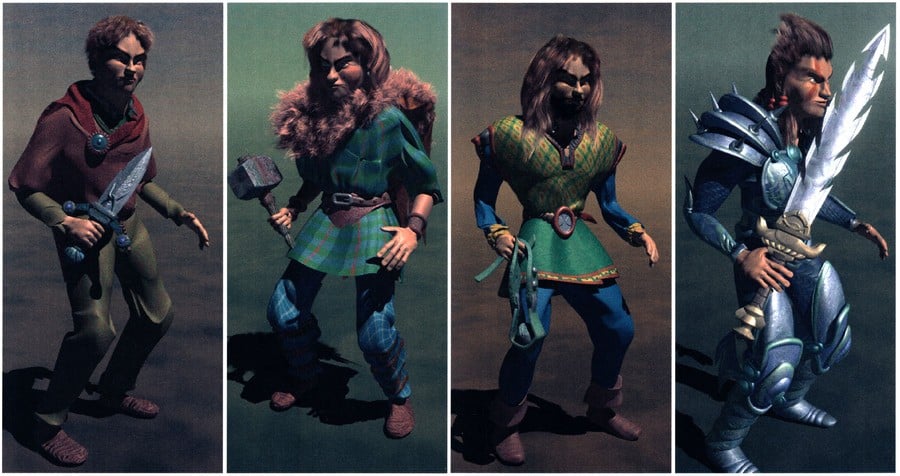
As David Bone Gill states, "Ste had a plan. It was a very tactile plan, like these big A1 sheets of dungeons and stuff that he had all planned out. And he had a lot of it in his head too. So him leaving as like the lead designer, it all just went a bit wayward after that, because we didn’t have anyone that was like a strong character who could drive it on after that."
He continues, "I don’t recall [Sony] bringing anyone on, and that’s the thing that probably should have happened. Like when I worked on Blur, that’s what Activision did for us, ‘Right, okay, stop messing about now, we’re going to put our guys in charge and shift it forward.’"
More Departures & A Disappointing End
Sony and Software continued working on Spiral Saga pretty much in parallel, following Pickford's departure. Martin Alltimes and Sony continued to work with the scriptwriter and cast voice actors for the project (including a young Peter Serafinowicz), while Software put together demos of the game to prove that the was still progressing. One of these demos (which has now sadly been lost to time) apparently included a short FMV of the playable character swinging his dagger, which was created by the artist Lyndon Brooke, as well as a few explorable rooms, some exterior locations, and a couple of enemies for you to fight.
Opinions on the demo's quality are divided depending on who you ask. Alltimes claims that after the delays and amount of time taken Sony wasn't happy with the results it was receiving. Meanwhile, Software employees speak positively about the quality of their work, despite admitting that the project had gone off the rails.
After failing to hit an October 1996 deadline for the game, given in the German magazine MANiAC, another tentative deadline was set for Winter 1997, but again the team struggled to pull the project together with no one around to lead its creative vision.
With the project dragging and the developers growing restless, several members of the team left to go to other studios, with the programmer David Bone Gill joining the Pickford Brothers over at ZedTwo, while Chun Wah Kong left to go to Psygnosis. According to Lyndon Brooke, this roughly coincided with when Sony passed down word that it had decided to cancel the project, though no one can agree on exactly when the axe finally fell.
In the years since, Spiral Saga has largely been forgotten, with barely any new materials having surfaced from the project since the day it was cancelled. Fortunately, though, while we were researching this piece, we were able to come across some unseen concept art, renders, and images from old magazines, many of which the team hadn't seen for more than 25 years. This is in addition to a never-before-released intro track by the Software Creations composer Martin Goodall, which you can listen to above.
Now you can experience more of the project than ever before, and get a proper insight into what Software and Sony were working on, and what maybe could have been if circumstances had unfolded differently.

